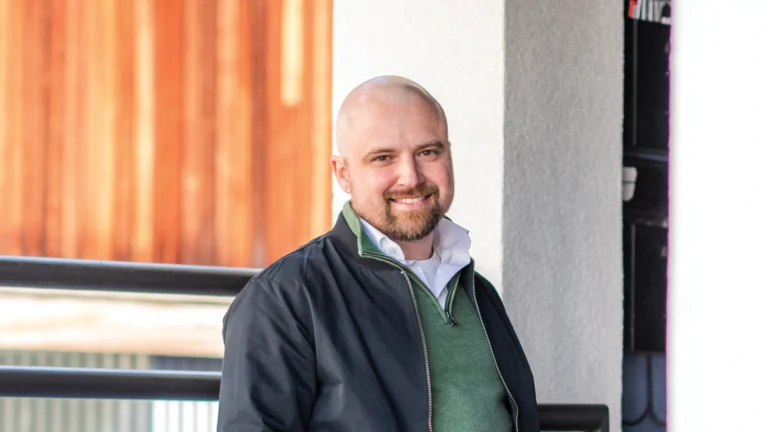
When we think about what it takes to succeed in-house, being a great lawyer is a given. But as senior roles demand more business skills than ever, in-house leaders are facing challenges that traditional legal skill-building doesn’t prepare them for. We chatted to Mila about what’s missing from the legal toolbox – and how to bridge the gap from lawyer to leader.

InView: Tell us a bit about your background. How did you end up in-house?
Mila Trezza: I was born and raised in a small town in Italy and completed my law degree in Bologna. I always had a passion for the international dimension of the law, and started my career as a stagiaire at the European Court of Justice in Luxembourg. From there I trained in private practice in Brussels and London, where I discovered my passion for the energy sector.
Despite being discouraged from going in-house soon after qualifying, corporate organizations were where my heart truly was. So it wasn’t long before I took a role at multinational oil and gas major Eni, where I built my legal career for almost 20 years.
What was your first experience of senior management like?
Six years after joining the company, I became the first female GC to lead the Eni UK legal function. In the years that followed, I became director of over 30 subsidiaries, managed six legal departments, and held regional responsibility for Europe and Australasia. I wore more than just a traditional legal hat! In the last few years of my time in-house, I was also involved in supporting the transition from oil and gas towards more sustainable energy solutions.
Working in the energy sector took me to parts of the world I wouldn’t have otherwise seen – places like Kazakhstan, Iran, Greenland, and Nigeria – immersing me in complex legal challenges across truly fascinating regions.
What was the toughest thing about stepping into a leadership position for the first time?
In the beginning, it was probably the absence of a role model. In the early 2000s, the oil and gas industry’s template for success was very male-centric, and there were very few women to look up to. Age was a factor, too. I was primarily working with people who were almost twice my age. Although there was a lot that I could learn from my seniors, there was no direct blueprint in the room for someone like me.
How did you overcome the absence of a role model?
By gradually realizing that there wasn’t just one way to be an effective in-house leader. What started as, “I will never be like so and so… I don’t have their style or skills,” evolved into, “I have different strengths. I’m good with people”. I quickly realized that I could be the most effective version of myself when I was leading in my own way.
“I wanted to understand how legal teams in similar organizations were operating, and what made them successful.”
Then, I started looking for opportunities to benchmark. I wanted to understand how legal teams in similar organizations were operating and what made them successful. What were their decision-making processes? How were they structuring and resourcing their teams? What happens when teams are undermanaged or overmanaged? Because so much in the oil and gas sector is done through joint ventures, I had plenty of opportunities to reflect on these experiences while working alongside other legal teams.
The reality, though, is that benchmarking yourself isn’t always easy. And unless you’re lucky enough to have a great mentor, or your predecessor has set the bar by leaving things in a state of exceptional excellence, there are very few resources out there that prepare senior lawyers for the transition into management. Leadership coaching is one way to gain those insights, challenge your thinking and work with your strengths.
How would you describe the step up from lawyer to legal leader?
It’s primarily a mindset shift. Most in-house counsel have already proven themselves technically competent as lawyers, but in progressing to management, they are suddenly required to take on an entirely new set of responsibilities: leading a team, fostering a collaborative environment, and becoming a strategic decision-maker to serve the business. These responsibilities require a whole host of non-legal skills, from political savviness and good judgment to stakeholder management and relational intelligence.
“There are very few resources out there that prepare senior lawyers for the transition into management.”
The challenge is that traditional legal training is based on a much narrower skill set – it’s highly focused on technical knowledge, drafting, client skills, and legal analysis. Business development skills, negotiation, and influencing skills, for example, often aren’t prioritized until much later, usually when we move into management. But it’s something we should be thinking about much earlier, ideally at university level.
Why is it so critical to get the human side of management right?
Ultimately, the greatest asset of any legal department is the know-how of its people. An energized, fulfilled, collaborative legal team will achieve far greater results than an overstretched and de-energized legal function with fantastic processes and precedents.
Of course, this is a demanding job – but leaders have a tremendous opportunity to set their teams up for success. From day one, we can engage our teams and ask ourselves: What can I do to ensure that these high-performing people have impactful roles, opportunities to grow, and are not heading for burn out?
What’s your top tip for setting up a legal team for success?
Success often starts with onboarding. It’s not unheard of in some industries for new recruits to spend weeks in their roles before fully understanding their reporting lines. This is a real challenge for in-house lawyers, who operate in a complex landscape and answer to multiple stakeholders across the business.
Rather than letting people scrabble for months to build the organizational understanding they need to do their jobs effectively, it’s better to arm them with this information at the outset, ideally with a designated member of the team they can turn to with questions.
For example, how are decisions made and who do they need to engage to move work forward? Does your organization’s culture reward taking initiative? What is the true appetite for risk? These things that shape an organization’s culture often go unspoken in many companies, but you can dramatically reduce the learning curve by addressing them early on.
Once you’ve laid that groundwork, how do you keep your team on track?
One thing that people often underestimate is the importance of creating regular opportunities for a team to come together, talk, and share knowledge. There is an enormous bank of information and a diversity of skill sets within most legal teams, but it can’t be leveraged if it remains siloed in people’s heads.
Set aside time to sit together as a team to celebrate your successes, clarify responsibilities, and share experiences and learnings. In siloed cultures, one member of a team might start a project that they think is new, but discover that a colleague already dealt with similar challenges five years ago.
It’s also critical to engage with your people and ask more about their challenges and ambitions to develop an understanding of the true talents that make up your team. No two people are the same, and differences in culture and personality mean that your people will show up in the workplace with completely different expectations. Some expect to be fully managed and given detailed feedback and thrive within structure; some are far more entrepreneurial and need the freedom to figure things out themselves.
Unless you understand their perspectives and incorporate the power of their differences into your leadership approach, you will continue to operate in silos – not just in terms of legal vs the business, but also across whatever other lines divide your team, be they driven by gender, age, or culture.
Why is it so important to build a collaborative environment?
The traditional lawyer mindset often leans towards win/lose. But organizational growth relies on building sustainable win- win-win solutions for all parties involved. Fostering stronger collaboration is a leadership skill we tend to overlook – that is, until we realize that our success as business partners depends on it because today’s problems are so complex that no singular expertize can solve them alone.
Creating that environment within your legal team is step one. But the most impactful collaboration happens at the organizational level. For that, you need to understand the perspectives of finance, of procurement, of HR, and what it is that the business actually wants you to achieve. That’s when legal starts to offer meaningful, actionable contributions and can become pivotal to the direction of a company.
Some legal departments are still treated as a support function. How would you change that?
Every legal department is an enabler of business within its organization. There are so many factors that go into commercial decision-making which are driven by legal considerations – from regulatory and compliance to the decision to litigate or settle a dispute. Sometimes, the best solution is not a legal solution, but the legal perspective is always key.
“True collaboration means you won’t have to wonder whether your advice has been implemented – you’ll be at the decision-making table.”
If you’re taking the reins of a legal function which is still seen internally as administrative or bureaucratic, your first challenge is to shift that perception. This can only be achieved by showing the value that lawyers bring to the business, not just talking about it. You can’t claim you have an open door if your team is out of sight.
To earn trust, you need to proactively engage with the business. If procurement thinks legal is too slow, for example, set up a meeting, understand their priorities, and offer practical solutions. True collaboration means you won’t have to wonder whether your advice has been implemented – you’ll be at the decision-making table.
Finally, what if you don’t have leadership aspirations? Isn’t it enough just to be a good lawyer anymore?
It’s true that not everyone wants to lead a team. But there is a component of self-leadership required for any career progression, irrespective of seniority. Around 70 percent of lawyers report mental health issues at work, and burnout is a significant concern globally. I think the challenges don’t just come from giving legal advice. Stress and anxiety stem from a lack of collaboration, difficulty setting healthy boundaries, managing self-care, progressing careers in a way that matters, and creating purpose in their work.
That’s why I believe nurturing self-leadership skills as early as possible is crucial, no matter what your career aspirations are. This can look like learning self-care and effective communication – skills that many lawyers still find difficult. How do you manage your workload? How do you communicate expectations across multiple reporting lines? Whether you’re managing yourself or a team of 200, investing in these skills will keep you on the right path to a gratifying professional life, and help you to avoid burnout.
And even if you currently don’t aspire to the senior roles that are being modelled around you, remember that the legal profession is changing fast. Many of my clients have ended up in positions they never knew existed. Others have created new roles around their ideas of career progression.
Where do you see yourself five or ten years down the line? Staying open-minded to more than one version of success is, in itself, a great sign of self-leadership!


